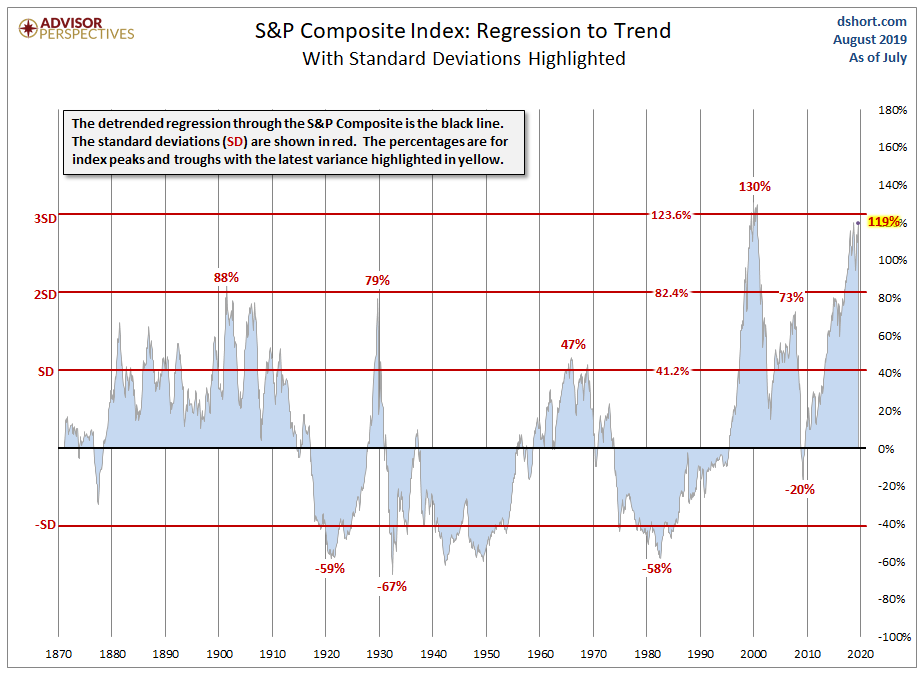Is the market overvalued or not? Does it make any difference if it is or isn't? Are we now in a place where the Fed will rescue the market whenever it starts to fall?
In this article I explore the issue of market valuations because it's important to know if you may be paying too much for an investment. You can invest in the greatest company on the planet, but if you pay too much you won't make much money, if any.
Bulls and optimists will say that valuations don't matter, but I disagree. One of their main arguments is that low interest rates justify high prices. But is that true? What do low interest rates have to do with the growth of corporate earnings? Today, companies are borrowing money at low rates and using the money to buy back their own stock. Does that sound like a good idea to you?
One thing is for sure - buying back stock raises earnings per share, and that means higher stock prices. How do the folks at the top of the corporate food chain make most of their money? Stock options. Think about it.
Below is a chart from Jill Mislinski and Doug Short. This duo cranks out hundreds of charts and I don't know how they do it. But this chart is one of my top 5. It shows how over- or under- valued the market is using variations from trend since 1870.
The market gyrates from extreme overvaluation to extreme undervaluation over the decades, and this chart captures it beautifully.
First let's define some terms
The Standard Deviation is a measure of how spread out numbers are.
Its symbol is σ (the Greek letter sigma)
The formula is easy: it is the square root of the Variance. So now you ask, "What is the Variance?"
The Variance is defined as:
The average of the squared differences from the Mean.
To calculate the variance follow these steps:
1. Work out the Mean (the simple average of the numbers)
2. Then for each number: subtract the Mean and square the result (the squared difference).
3. Then work out the average of those squared differences.
If this is over your head, don't worry.
I'm going to translate it into plain English.
When the market is trading above or below 40% relative to the long-term mean, it has a standard deviation of zero. Statisticians see this as normal behavior.
But when it is up (or down) by more than 40%, statisticians measure this variance in terms of standard deviation. The farther the market goes from 40% above or below the mean, the higher the standard deviation score is.
Referring back to the above chart we can see that when the market goes up by 40%, it has registered a standard deviation of 1. This means that even though this is a big move in the market, it still falls within 68% of all readings that have been recorded by history.
When we get to 2 standard deviations, we find ourselves in rarefied air. A 2 standard deviation event requires a gain or loss of 80% in the market. The chart shows how rare these occurrences are, but they do happen.
When we get to 3 standard deviations above or below the mean, alarm bells should go off. This has only happened once in the 150 year history of the stock market. That was just before the bursting of the tech bubble in 2000.
Where are we today?
Today the market stands at 119% above the long-term mean. If you're a bull or an optimist you might think that the market can still go higher from here, like it did in 2000. Good luck with that.
What I'm advising my clients to do is raise cash in anticipation of the reversion to the mean that is clearly coming. I don't know when it's coming, but I'm not interested in trying to top-tick this great bull market.

